Portrait of a Friendship: Henry Liddon and Lewis Carroll
12 Feb 2025|James Howarth
- Library, Arts & Archives
How a small postcard left in a book reveals the friendship between a Hall Vice-Principal and a famous author, and how they spent Friday 30 August 1867.
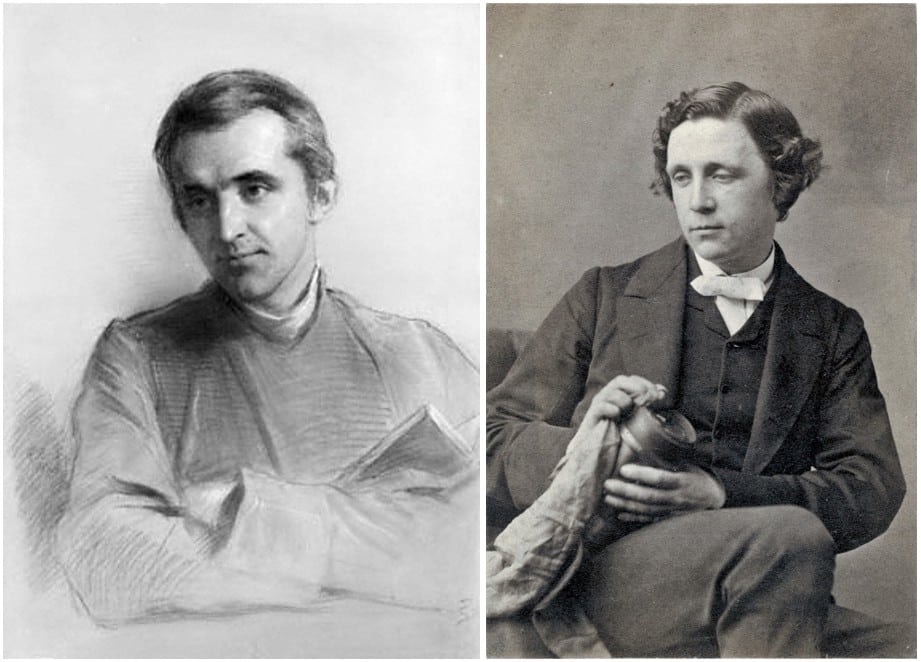
It is something of a paradox in running both our Old and New Libraires that one of the chief joys in the former is something we spend a lot of time to prevent and remove in the latter – that is the presence of marginal notes, annotations and inserted objects in a book. The signs of a book having been read or owned.
The books of Henry Liddon
The small collection of books in the Old Library that once belonged to Henry Parry Liddon, Vice-Principal between 1859 and 1862, is a fine example of this. Liddon was a man of immense personal piety and the books are mostly prayer books, bibles and other devotional texts. They are stuffed full of letters, drafts of sermons and book sections, brief letters, pressed plants, mourning cards and charity appeals amongst other things. In the pages of volumes are annotations, glued-in pictures, scholarly notes, underlinings and scribbled-in dates.
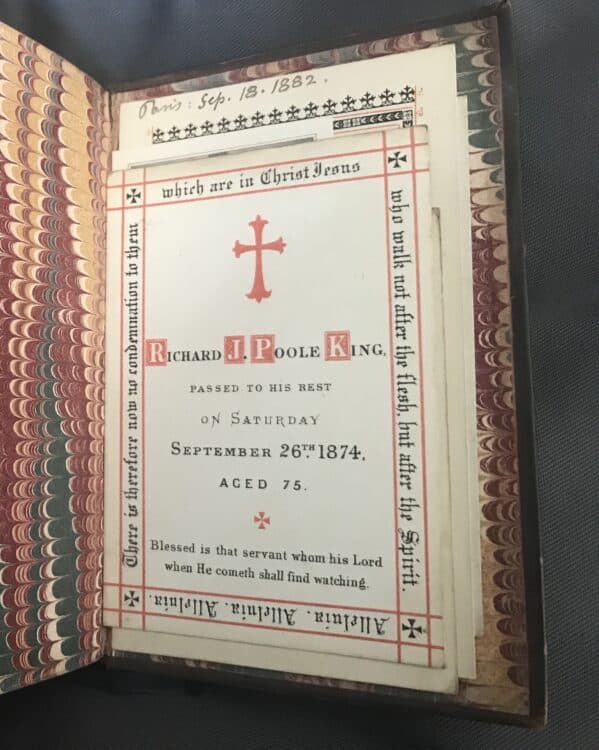
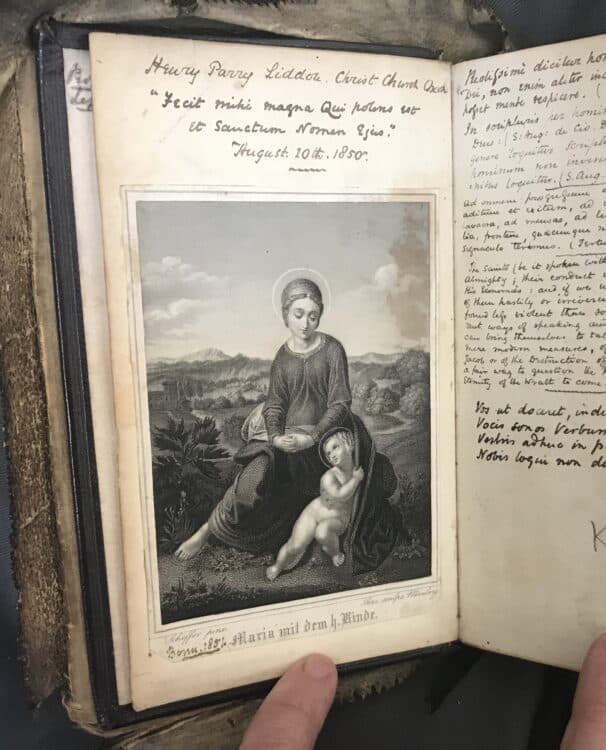

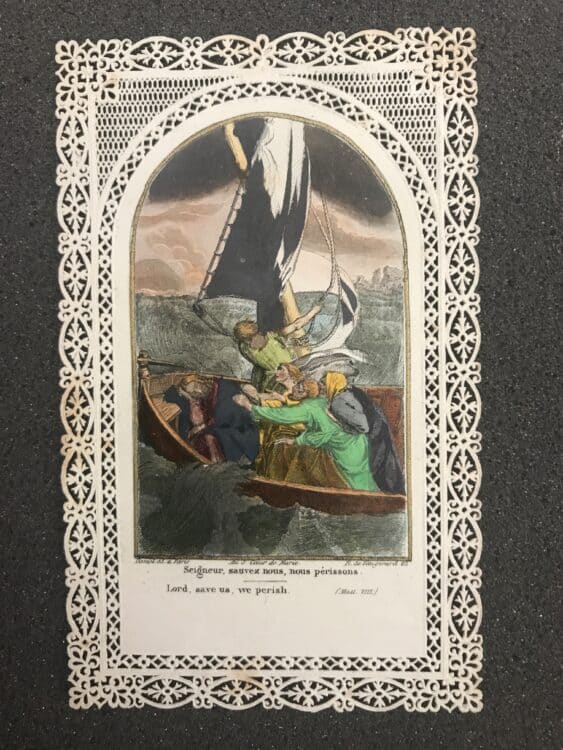
Sometimes it is possible to find a context and explanation of the insertions, for example a note in the front leaves of a Book of Common Prayer notes: “This book touched S[aint] Edm[und’s] Shr[ine] at Pontigny. July 11 1861”.
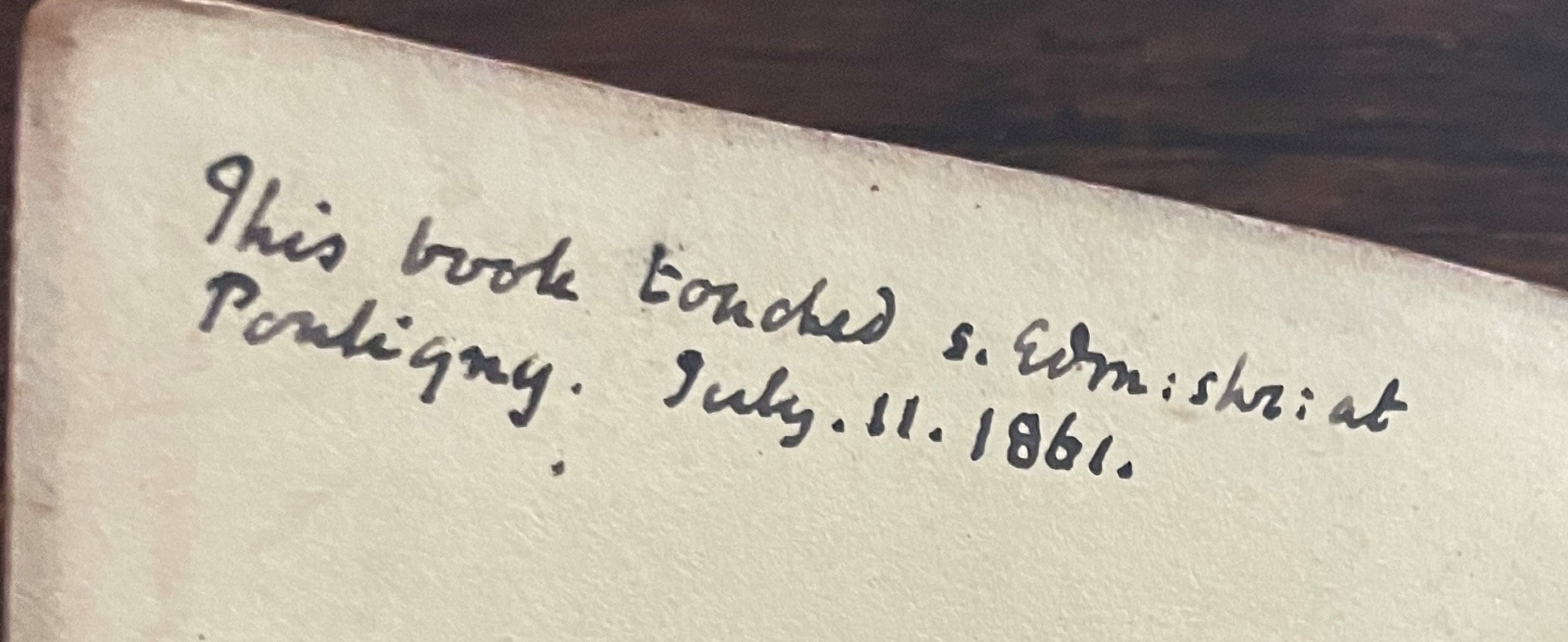
Other circumstances remain more mysterious, at least without further study. In one Bible, a note recording Liddon’s 30th birthday, spent at the German spa town of Schandau, has been scrawled above the story of the miraculous survival of Shadrach, Meshach and Abednego when cast into a furnace from the Book of Daniel.
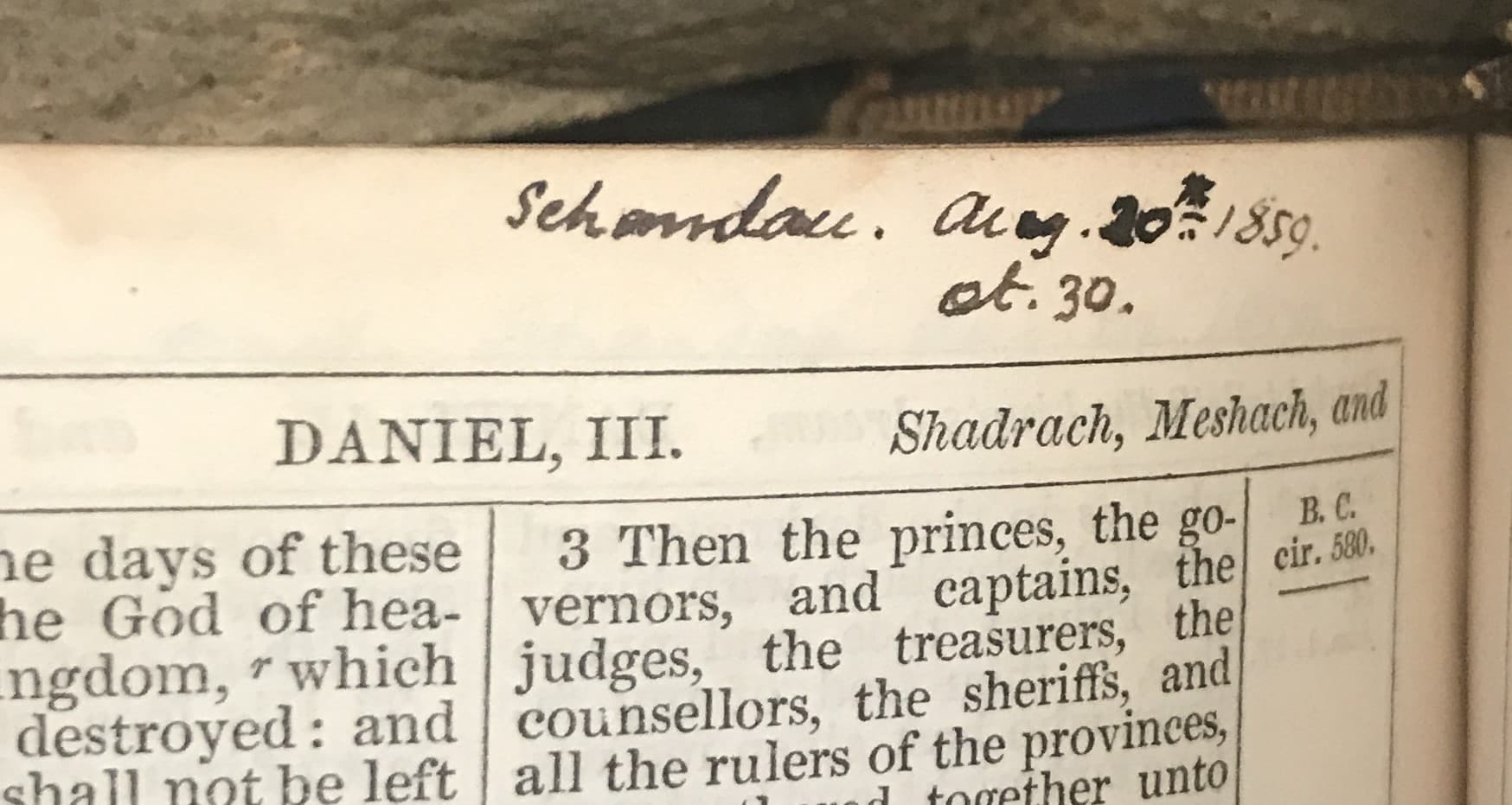
One book, an edition of the Book of Psalms in Hebrew, reveals something of Liddon’s close friendship with Charles Dodgson, that is the author Lewis Carroll.
“Harry-Parry Ridy-Pidy Coachy-Poachy…” Liddon and Carroll
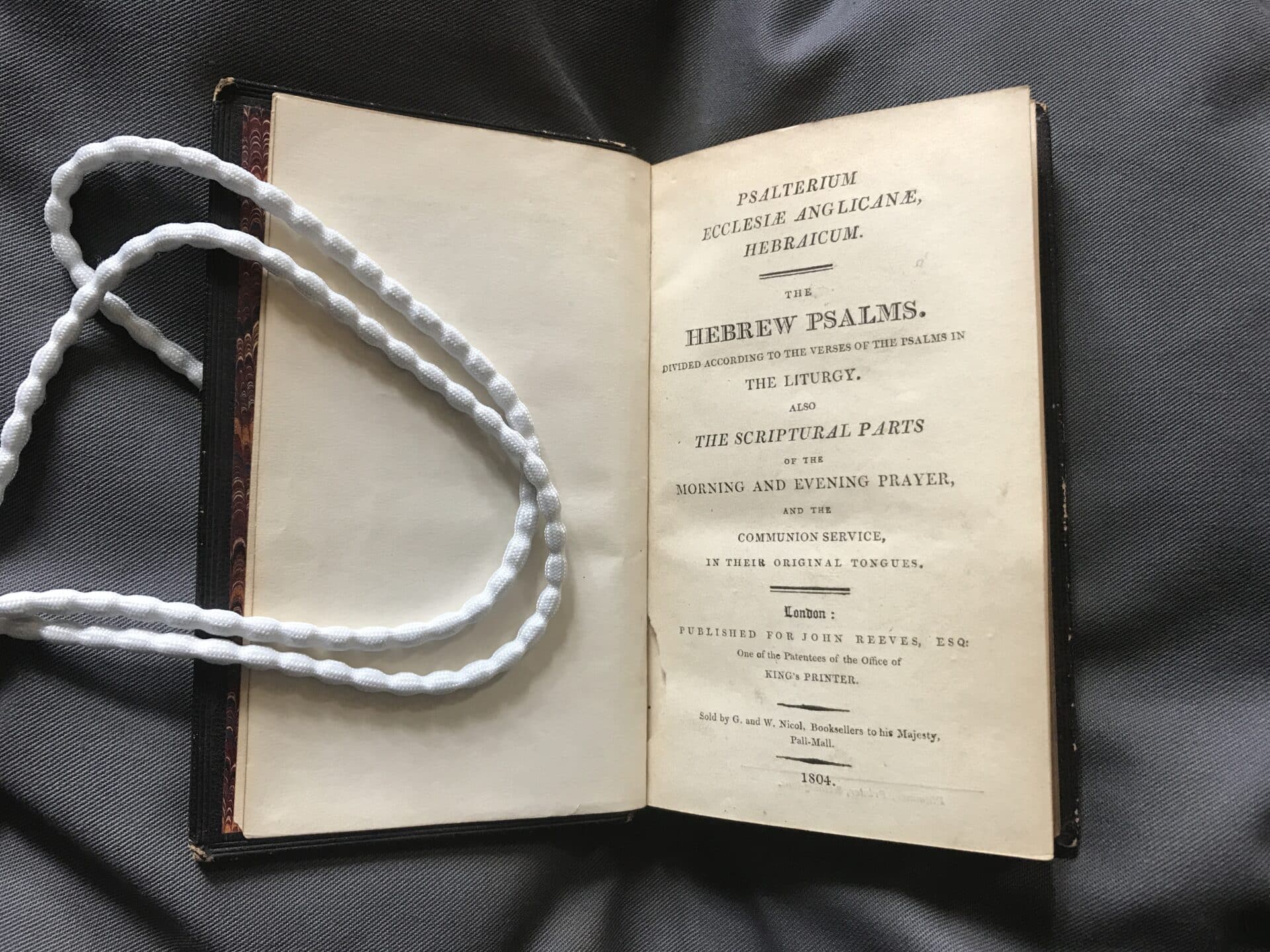
The book is a devotional rather than an academic text, designed to enable the use of the Hebrew Psalms when performing the daily offices of the Church of England. It was a gift from Carroll to Liddon as recorded on the flyleaf:
“H.P. Liddon from C.L. Dodgson with most sincere regards March 31 1867.”
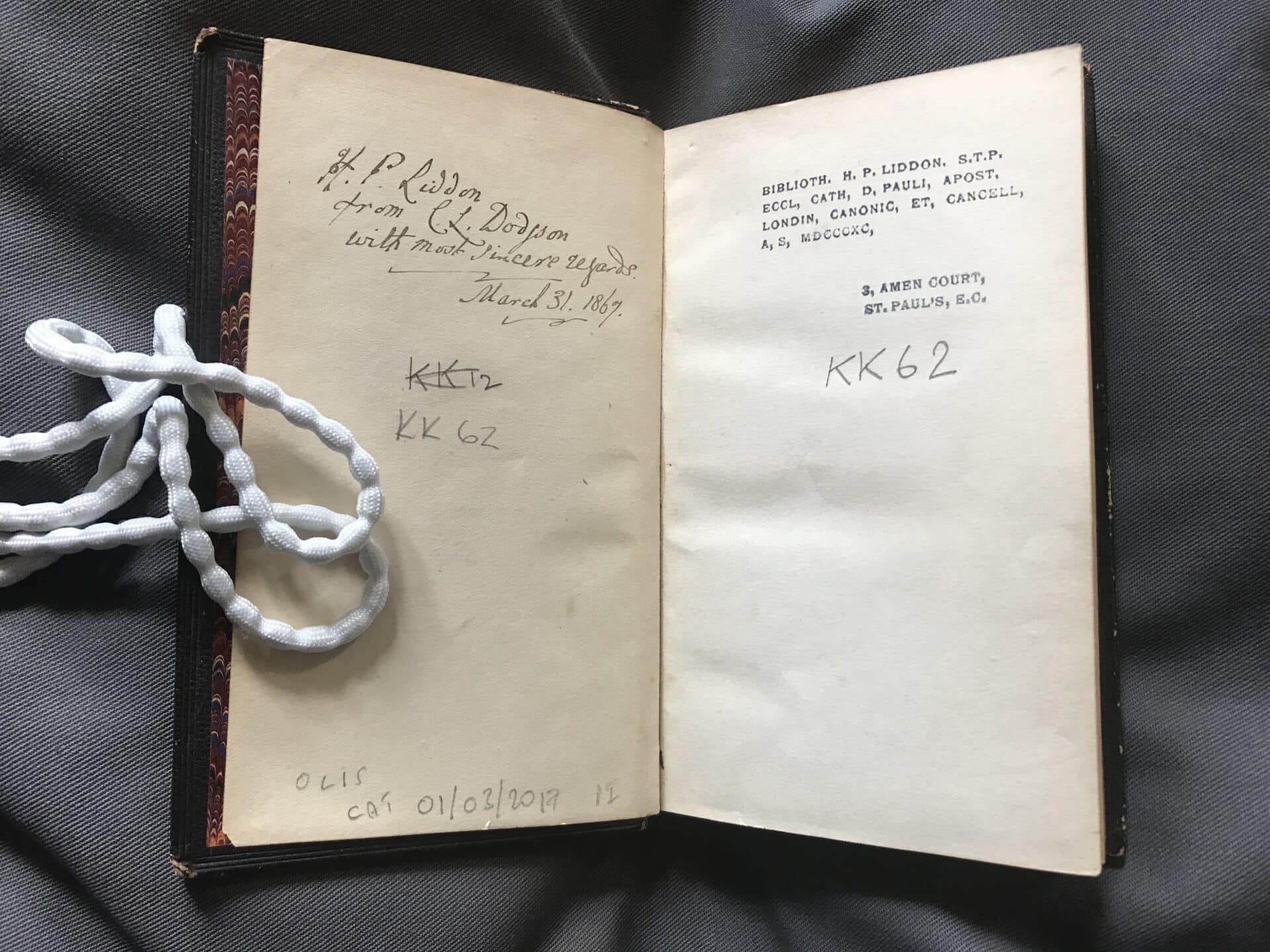
In 1867, 31 March was a Sunday, the third in Lent, but there is no obvious circumstance to the gift. Carroll’s published diary has no entry for the day and the entry in Liddon’s diary does not mention it. Carroll had asked Liddon to recommend books for the study of Hebrew the previous February.
At this point, the two men had been friends for the best part of 17 years, both held Studentships (i.e., Fellowships) at Christ Church and spent much time together. Carroll had in fact just returned from a walk with Liddon on 13 November 1862 when he “….began writing the fairy-tale for Alice…” which would become Alice’s Adventures in Wonderland. Liddon also features in Lewis’ writing, he is affectionally burlesqued as a favourite cosseted child “Harry-Parry Ridy-Pidy Coachy-Poachy” in “The Blank Cheque”, a short satire on the plans for the new Examination Schools and in “Elections to the Hebdomadal Council”, another Oxford poem.
1867, though, marked a particular moment in their friendship, as they travelled together to Moscow that summer. It was Carroll’s first, and only, trip abroad.
“Ambitious for one who has never yet left England”: A journey to Moscow recorded
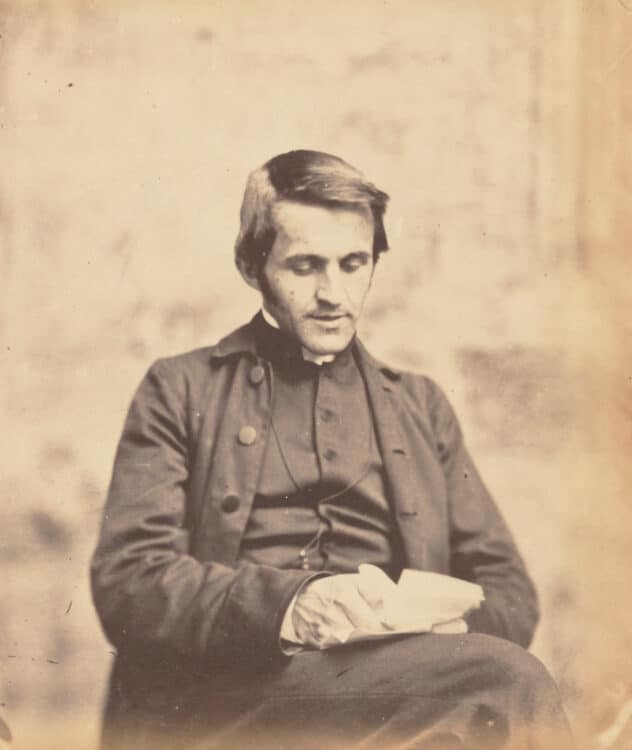
Liddon was an ardent High Churchman and a leading member of the Oxford Movement. He wished to visit Russia to strengthen ties between the Church of England and the Russian Orthodox Church and travelled with letters of introduction to several Russian prelates as well as senior members of the Ministry of Education which controlled the Church. However, the trip was arranged swiftly. On 11 July, Carroll records in his diary: “Liddon has informed me that he can go abroad with me, and we have decided on Moscow! Ambitious for one who has never yet left England.” They departed the same day.
The diaries of both men survive for the period of their holiday, and they form both a moving portrait of their friendship and also highlight their very contrasting characters. This is evident from the very beginning. Carroll’s arrival in London en route to Dover coincided with that of the Ottoman Emperor Abdulaziz who was on a state tour of Europe. Liddon’s description is strictly factual:
“After lunch while crossing the Suspension Bridge, saw the Sultan enter London in the Royal Carriage. On his reaching the Station at Charing Cross, the band struck up and there was great shouting.”
Carroll’s account has more brio:
“The Sultan & I arrived in London almost at the same time, but in different quarter – my point of entry was Paddington, and his was Charing Cross: I must admit that the crowd was greatest at the latter place.”
Liddon’s diary entries are brief and often terse. They note churches visited and services attended. The temperature is faithfully recorded every day until his thermometer meets with an unfortunate accident in St Petersburg. He also records several long arguments with his friend about religion.
The trip made a strong impression on Carroll – Liddon records him “…overcome by the beauty of Cologne Cathedral. I found him leaning against the rails of the Choir and sobbing like a child. When the verger came to show us over the chapels…he got out of the way: he said he could not bear the harsh voice of the man in the presence of so much beauty.”
This is reflected in the colourful entries of Carroll’s journal: there are vivid accounts of religious services, he shows a boundless enthusiasm for people met along the way (the same people often described with some irritation by Liddon) and narrates events with comic flair as when he describes ferociously bartering with a cab driver in broken Russian. Notably, though, at no point does he even allude to the disputes Liddon mentions and even in Liddon’s account there is no lingering rancour between the two friends.
“We both think Breslau worth the day we have given it” 30 August 1867
It seems that Liddon may have brought the Hebrew Psalter given to him by Carroll on their journey. Tucked inside its pages is a small, now very faded picture of the Lady Chapel (Marienkapelle) in the Cathedral of Breslau, now Wrocław in modern Poland, but in 1867 part of Prussia. On the back is written “b[ough]t at Breslau 30 Aug. 1867”.
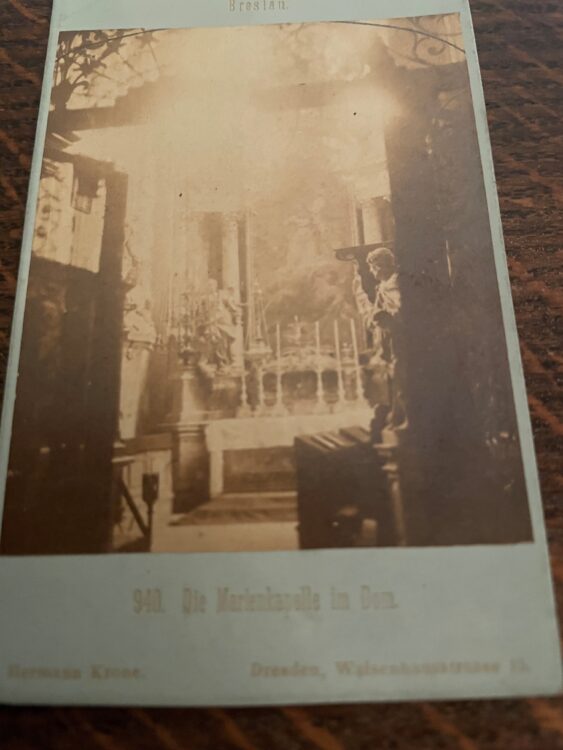
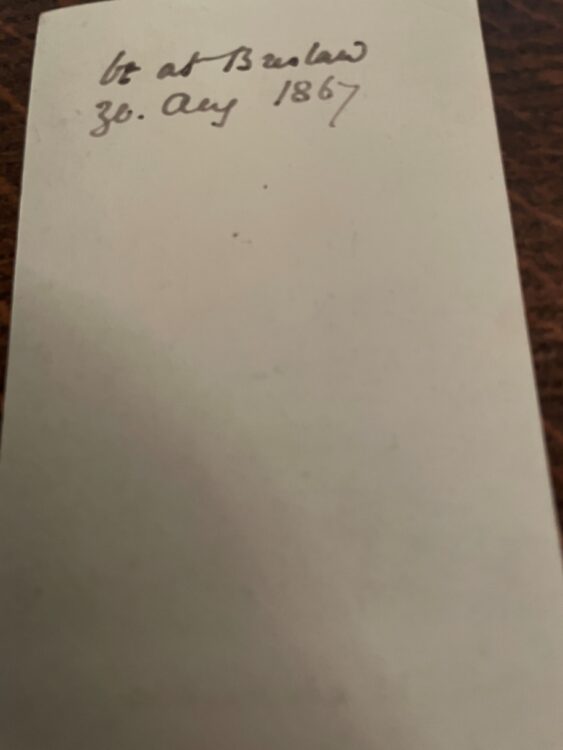
Liddon and Carroll stopped in the city on their return from Russia. Both men record the events of the day so we can reconstruct the exact circumstances in which the card was acquired.
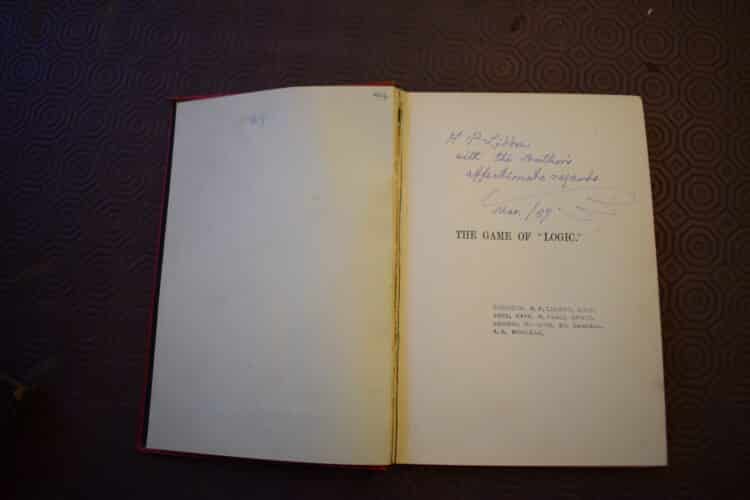
The morning of the 30th (a Friday) found them comfortably ensconced in the Golden Goose Hotel (Goldene Gans), which Lewis describes as “if not a layer of golden eggs, certainly worthy of ‘golden opinions from all sorts of men.’” He notes it was a day of “…clear sunlight & delicious balmy air…” They visit churches, “…chiefly notable for their beautiful proportions, the great height giving to their brick towers & buttresses & the slender windows a beauty quite independent of all ornament.”
The morning culminated in an ascent of the tower of the Lutheran church of St Elizabeth, described by Liddon as a “splendid building.” He goes on: “We went up and enjoyed a magnificent view of the town.”
However, following these exertions Carroll was taken ill at lunch, and his friend only got him back to the hotel “with some difficulty”. Left to his own devices, Liddon wandered the town visiting more churches including the Cathedral where he presumably acquired the card we still possess.
The evening brought the pair back together: “we drove to the ‘winter-garden’ & listened for a short while to the indispensable open-air concert which the German people love so well…”, writes Carroll.
“Then…”, continues Liddon in his account, “…home to bed: I was fairly tired out. The day has been cloudless, and we both think Breslau has been worth the day we have given it.”
Although they never travelled together again, Liddon and Carroll remained friends until Liddon died in 1890. We hold another book of his which was a gift from Carroll, given three years before, a copy of Carroll’s Game of Logic inscribed: “H. P. Liddon with the author’s affectionate regards Mar. /87.”
The work is a playful introduction to mathematical logic, it is intended for children, although as our own Tom Crawford, Fellow by Special Election in Maths, discovered last year it is perhaps more complicated than it seems.
Category: Library, Arts & Archives
Author
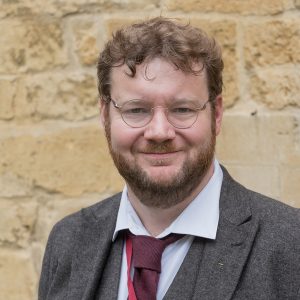
James
Howarth
James has been St Edmund Hall’s Librarian since May 2018. He is responsible for maintaining and developing the library’s collections – including the historic and special collections that are housed in the seventeenth-century Old Library and is keen to promote their use in research, study and outreach.